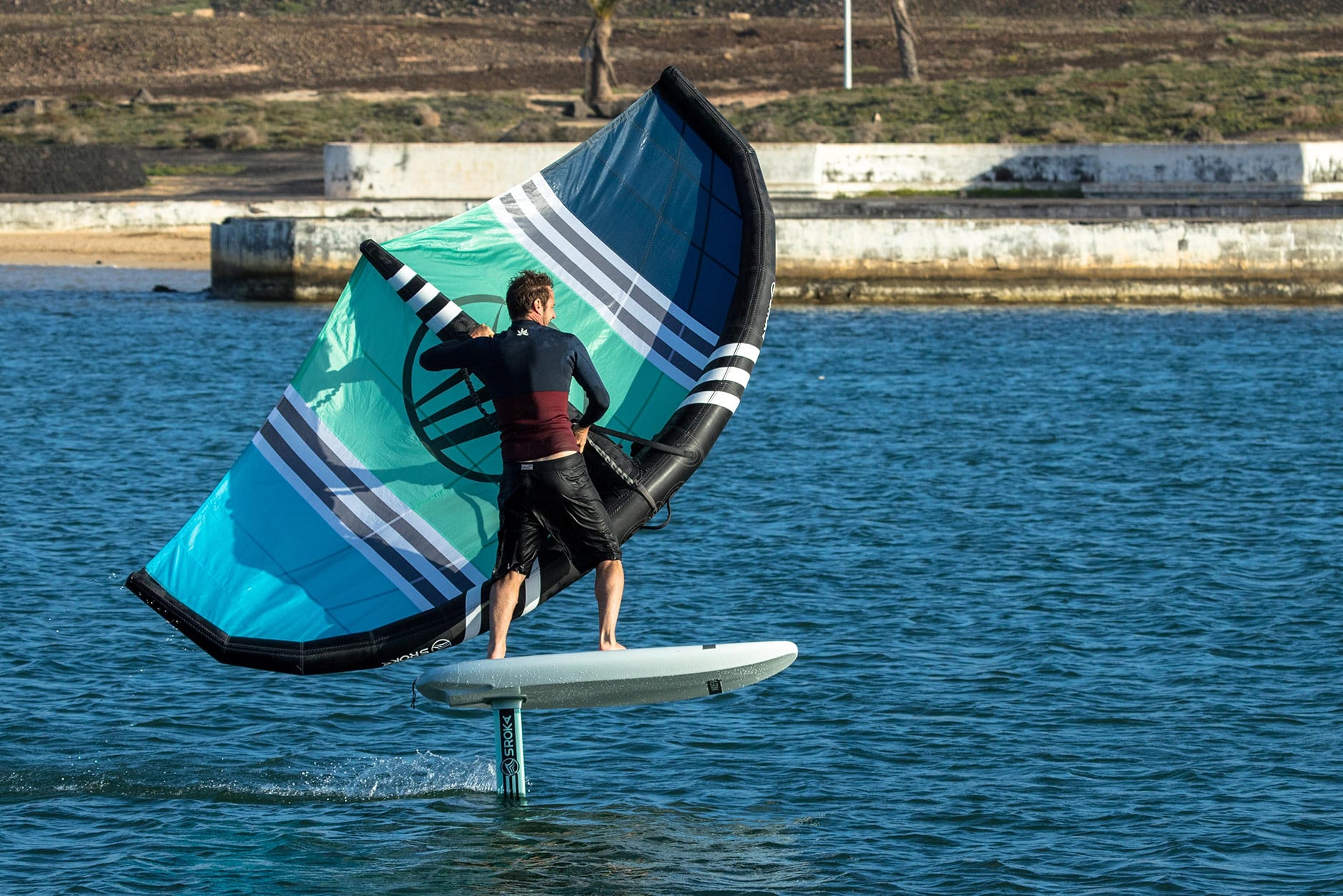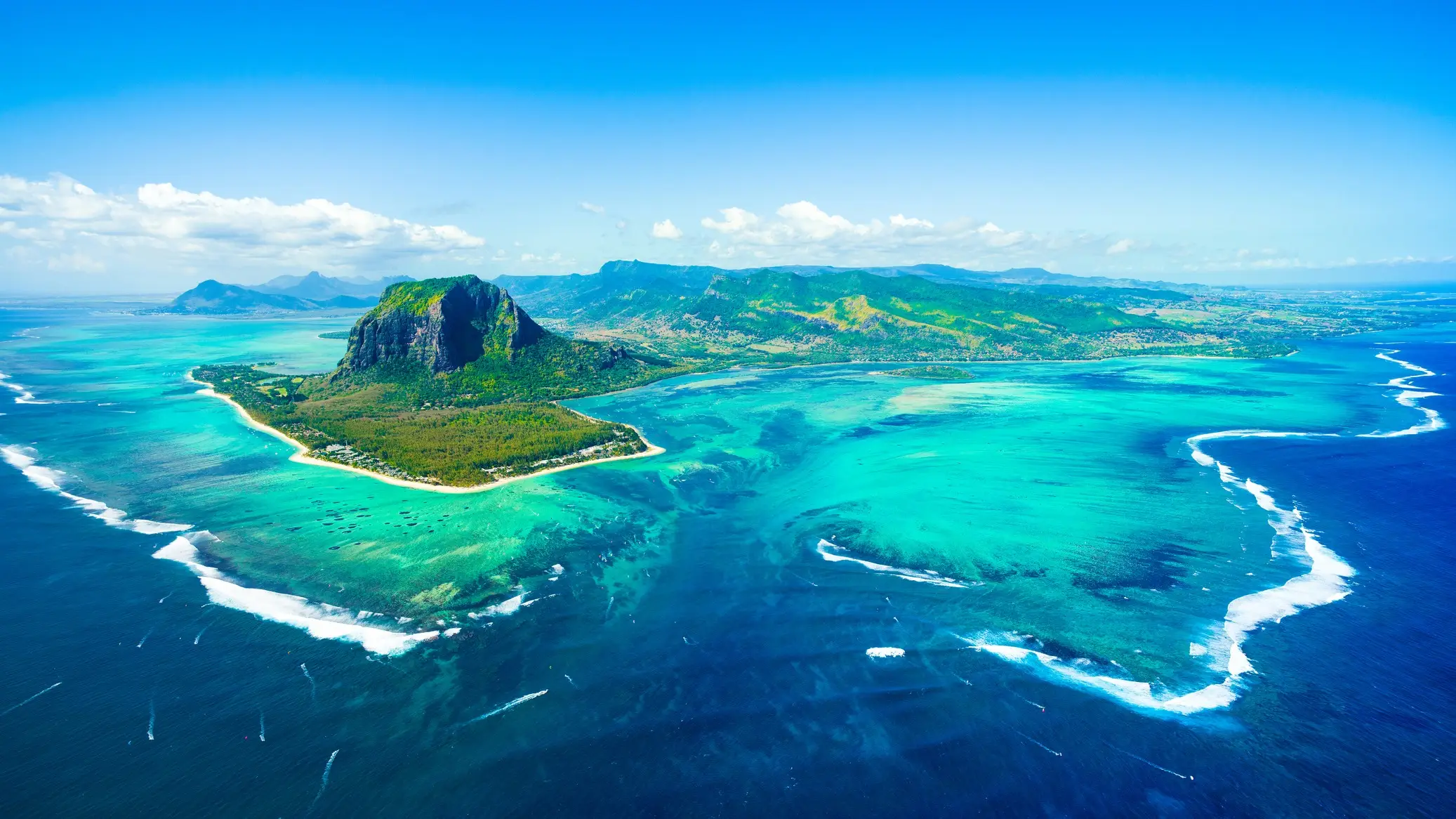Andalusia, a sunny region in the south of Spain, is a true paradise for water sports enthusiasts, especially wing foil. With its vast and diverse …
How to start Wing Foiling?
What is Wing Foil?
Wing Foil is the latest in board sports. This consists of manipulating a wing held with both hands (“wing”) with a hydrofoil mounted on a short SUP board. It is a practice halfway between Windfoil, Kite Foil and SUP Foil. In this article you will find all the information you may need to know How to start Wing Foiling?
The advantage of the WingFoil is that you can move with maximum freedom on a body of water using the energy of the wind and the swell. The wing provides manoeuvrability and Makes it easier for the foil to take off by the use of a constant force (wind). A distinction is therefore made between the practice of Downwind SUP Foil which uses only the energy of the swell. Thanks to the lightness and mobility of the kite, it is possible to alternate practices during the same session: going upwind by tacking at first and then going downwind at your back as in Downwind SUP Foil in a second step, for example. It is a very playful medium that makes the practitioner refocus on his sensations, without comparison to others.
The hydrofoil allows you to take off above the water and surf above the surface. Wing Foil is practiced on a short but wide and thick (voluminous) stand up paddle board to allow the practitioner to quickly stand up. Starting WingFoil allows you to feel new sensations, move easily and freely on any type of body of water with a relatively simple and easy to set up equipment. It can be practiced in any wind direction but will be more interesting in downwind with a crosswind. It is also possible to practice theWing-Foil in the waves and to use the lift of the kite to go up to sea and surf one after the other.
The advantage of the WingFoil is that you can move with maximum freedom on a body of water using the energy of the wind and the swell. The wing provides manoeuvrability and Makes it easier for the foil to take off by the use of a constant force (wind). We therefore distinguish the practice of downwind SUP FOIL which uses only the energy of the swell. Thanks to the lightness and mobility of the kite, it is possible to alternate practices during the same session: going upwind by tacking at first and then going downwind at your back as in Downwind SUP Foil in a second step, for example. It is a very playful medium that makes the practitioner refocus on his sensations, without comparison to others.
The hydrofoil allows you to take off above the water and surf above the surface. Wing Foil is practiced on a short but wide and thick (voluminous) stand up paddle board to allow the practitioner to quickly stand up. Starting WingFoil allows you to feel new sensations, move easily and freely on any type of body of water with a relatively simple and easy to set up equipment. It can be practiced in any wind direction but will be more interesting in downwind with a crosswind. It is also possible to practice theWing-Foil in the waves and to use the lift of the kite to go up to sea and surf one after the other.
Why take up wingfoiling?
Wingfoil is a new and booming discipline that is attracting more and more water sports enthusiasts. Here are a few reasons why you should consider taking up wingfoiling:
- Unique sensations: The wingfoil offers exceptional gliding and flying sensations. Flying over the water, you will feel a feeling of freedom and weightlessness, combined with the fluidity of navigation.
- Accessibility: Wingfoil is easier to learn than other water sports such as kitesurfing or windsurfing. Thanks to the lift of the foil and the stability of the kite, novices can quickly get their bearings, progress and have fun from the first sessions.
- Versatility: Wingfoil can be practiced in various wind and water conditions. Whether you’re cruising on a lake, at sea or even on wave spots, the wingfoil offers incredible versatility to explore new horizons and adapt to the water conditions of the day.
- Fitness: Wingfoil engages the whole body, providing an excellent cardiovascular workout and strengthening the muscles of the body, especially the legs, arms and abdominals. It is a complete sport that will allow you to stay in shape while having fun on the water.
In short, taking up wingfoil will allow you to discover new sensations, enjoy nature, take on new challenges and experience moments of pure pleasure on the water. Whether you are a beginner or already a water sports enthusiast, wingfoil offers a unique experience that is worth exploring.

Who can wing foil?
Wingfoil is accessible to a wide audience, from novices to experienced riders. It is suitable for water sports enthusiasts looking for new sensations. Whether you’re a fan of surfing, kitesurfing or stand up paddleboarding, you can get into wingfoil. However, it is recommended to have some control of balance and a good physical condition to fully enjoy this discipline.
How to start Wingfoil?
If you want to get started with wingfoil, here are some steps to follow to get started:
- Take classes or find a mentor: It is recommended that you take lessons from a wingfoil school, a shop, or find an experienced mentor who can guide you and give you valuable advice. This will allow you to learn the technical basics and acquire best practices from the start.
- Choose the right material: To start, it is essential to choose the right equipment, opt for equipment suitable for beginners but which will also allow you to progress. It is also necessary to take into account your size when choosing your equipment. We explain to you at the end of this article which wingfoil equipment to choose according to your size, your desires and your level.
- Choose a suitable spot: Select a spot with moderate wind conditions and a sufficiently flat and clear body of water. Avoid crowded areas and make sure you have enough space to move around safely.
- Step-by-step progression: Start by getting used to the board and kite as you sail close to the beach. Once you’re comfortable, try wingfoil taking off using pumping techniques. Practice regularly to improve your balance, pumping technique, and foil control.
- Stay safe: Wear a life jacket and use a leash to attach your kite to your wrist. Check the weather conditions before leaving for your session and always follow the safety rules in force.
Under what conditions should you practice Wing Foiling?
We advise you to start Wing Foil in average wind conditions on a spot sheltered from the swell (between 15 and 20 knots established). It is easier to start with a sideshore wind so as not to risk being taken out to sea without being able to return (onshore wind) or being constantly brought to shore by the wind (sea wind).
It is advisable to pay attention to the choice of spot to avoid floating algae that prevent the hydrofoil from working properly, as well as any other floating object present. We also advise you to offer bay-shaped spotlights. This way, if you go further away, you can always reach the coast and return on foot with your equipment. Finally, it is ideal to start in a height of water in which you have a foot but with enough depth so that the hydrofoil does not touch the bottom of the water. It is then possible for an experienced sailor with an average size of 80 kg to sail in a Wing Foil over a wind range ranging from 8-10 knots to 40 knots.
Prepare your Wing Foil equipment to get started in Wing!
The Wing Foil has different elements, in order to get into the water as easily as possible without risking damaging your equipment, we recommend the following method :
- Prepare your Wing Foil board: assemble your hydrofoil and attach it to your board, attach your leash to the board.
- Place it near the water: once the board and foil are mounted, bring the relatives to the place where you want to get in the water.
- Dress up: and prepare as if you were going straight into the water.
- Inflate your wing : The wing has a strong wind grip, which is why we only advise inflating it just before getting into the water. We advise you to inflate it away from the wind and, if possible, to attach it to an object to avoid any risk of flying away. As soon as the wing is inflated, attach the wing leash to your wrist right away. Avoid abrasion on sand or bitumen.
- Join your Wing Foil board: carry the wing by the handle and place the leading edge facing the wind to make it neutral to it and easily carry it. Once you’re close to the water with your wing and Wing Foil board, attach your board leash.
- Carry your equipment to the water: as you have left your Wing Foil board close to the water, you only have to walk a few meters carrying both the board and the wing. Be careful to always carry your board in the direction of the wind so as not to risk the wing catching the wind and crashing into the foil.


Which foil for a beginner?
For wingfoil beginners, it is essential to choose a foil with enough lift and stability to learn and progress quickly. At Sroka Company, we highly recommend our S-Foil 1750 Classic foil for novices. With its large lift surface, it allows for optimal take-off and balance, making it easier to learn the first wingfoil flights. However, don’t let its beginner look fool you, as the S-Foil 1750 is also designed to get you moving up quickly. Its versatility will also allow you to learn SUP Foil, downwind foil and venture into small waves for surf foil. By choosing the S-Foil 1750 foil at Sroka, you are opting for stability, progression and a fast and optimal wingfoil learning experience.
How to take off in wing foiling?
A key step to start in Wingfoil and start having fun in Wing Foil, taking off in Wing Foil is not very complicated but requires you to do it in the right way. Find our illustrated tips and comments below to achieve this from your first session.

The first step is to kneel on your board while holding the wing (in the right direction) with the handles provided for this purpose. It is then a question of positioning the wing above your head so that the edges do not touch the water, and in front of the board by orienting it in an axis facing the almost neutral wind. The objective of this step is to control the lift of the wing and its reaction to the wind and to find a stable position on the board. Once you are stable and have good control of the wing, you can orient it in such a way as to better catch the wind and move your foil board forward.

To move on to the second stage , you need enough wind speed. Once reached, you can position your front foot flat in the center of the board. This allows you to get up in two steps for ease.

You can then move on to the third step , this time placing your back foot flat on the foil board, allowing you to stand up. It is essential to have a good foot placement: the back foot must be centered on the board and ideally located just above the foil mast, the front foot must be centered on the board in front of your back foot with a foot spacing equivalent to shoulder width. These discrepancies are likely to differ depending on the size and volume of your foil board.

First of all, we advise you to keep the wing relatively above your head in a position close to lift neutrality (first photo on the left) so as not to be unbalanced by gusts. Then, in a second step, lower it to orient the central flange (or boom depending on the model) so that it is almost parallel to the water. You then get more lift and the board accelerates.
The fourth stage is take-off. You now have enough speed with your board to activate the foil’s lift. To facilitate this, you can perform a light “pumping” movement by successively lightening your weight on the front leg and then on the back leg to play with the angle of the front wing of the foil and make it more load-bearing. When the foil takes off, you have to shift the weight back onto the front leg and hold the wing firmly, staying straight to maximize the lift of the wind. Repeat this sequence as many times as necessary (sometimes once, sometimes ten…) until you take off.
You are now in flight and the duration of this flight depends on your ability to efficiently distribute your weight between the front and rear leg but above all on the orientation/lift axis you give to your wing so that the wind allows you to keep moving forward. Transferring the weight to the rear leg causes the foil to go up and transferring it back to the front leg brings the foil down. It is important to stay upright and keep your center of gravity above the foil to avoid falling.


The windsup + Wing pack for beginners with your family
To learn how to handle a wing with ease, we offer you a SUP adapted to navigation (a fin at the back + a fin in the middle to avoid drifting downwind) and a wing. It’s the best way to discover sailing safely, with the whole family.
Click here to find more information about the 3.3m or 4m inflatable windsup + wing pack
For surfers:
For surfers who have more of a surfing and/or surfing foil background than windsurfing or kitesurfing, it can be complicated to navigate using both foot positions (goofy and regular stances). As in the photo opposite, it is possible to sail with your back to the sail in one direction and facing the sail in the other. This has the advantage of ensuring good control of the board and the foil but has the strong disadvantage of making the ascent to the wind much harder (it implies a twisting of the body between the axis of the legs and shoulders). We recommend practicing changing positions to be able to go upwind more efficiently and re-switch to your most comfortable stanza at each turn.
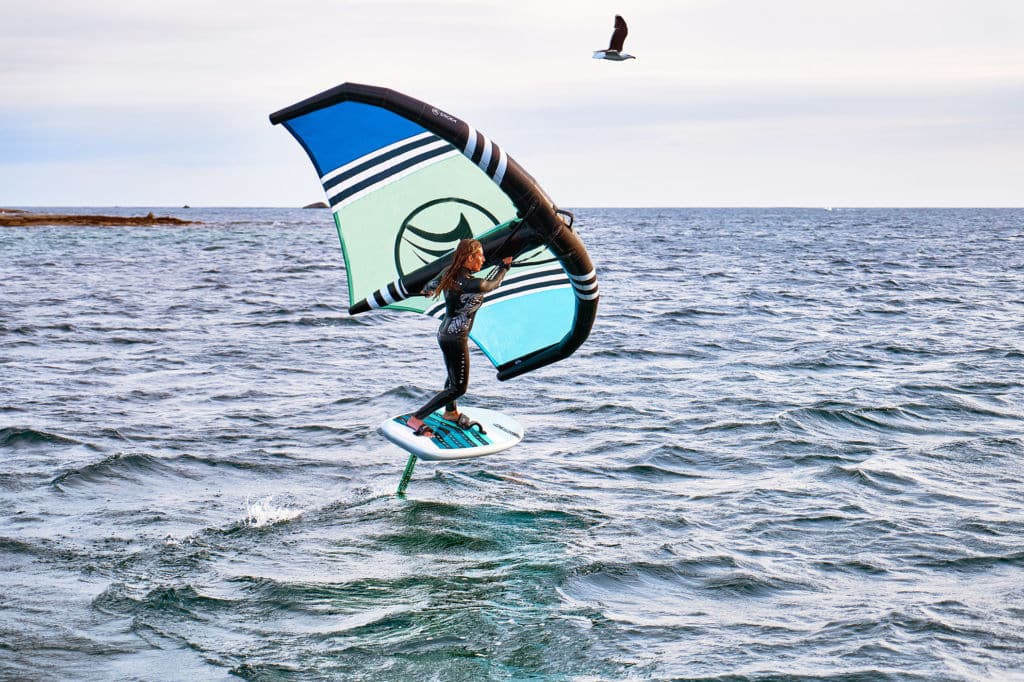
Safety rules
Wing Foil is a risky board sport in the same way as Windsurfing, Kitesurfing or any other Foil sport. We advise each practitioner to equip themselves with the following elements during their session: board leash and wing leash (mandatory), flotation vest / impact vest (mandatory if you exceed the 300m zone), helmet (recommended). It is really not advisable to do a session alone whatever your level, you should always let someone know about your session and the planned practice schedules.
We recommend that you only practice Wing Foil on spots that have been studied and spotted beforehand. As the marine weather is changeable and unpredictable, it is essential to stay close to the coast so that you can return easily and quickly if the wind turns, strengthens or drops completely. Pay close attention to the effects of currents due to tides or swells.
Wing foil, which brand to choose?
When it comes to choosing a brand for wingfoil, opting for the quality of the material is essential. It is important to take into account that price does not always guarantee quality. At Sroka Company, we focus on the constant search for the best quality at the best price. Our commitment to quality is reflected in each of our products, with meticulous attention to detail, durability and performance.
Choosing high-quality equipment for wingfoil has many advantages. This ensures better stability, increased responsiveness, longer service life and a more pleasant riding experience. The quality of the equipment also affects the safety and confidence you feel when you’re on the water, which is essential to enjoying this discipline to the fullest.
When you choose Sroka Company, you can be confident in the quality of our hardware and our commitment to providing you with the best value for your money. We are passionate about wingfoil and we want to share this passion with you by offering you products that meet your highest expectations.

What equipment to choose to start Wing Foiling?
Like any board sport, Wing Foil has a technical side that makes the choice of equipment very important. This technicality is multiplied tenfold by the fact that the Wing Foil solicits both the energy of the wind by the Wing and the energy of the swell by the hydrofoil.
The hydrofoil is composed of a mast, a fuselage, a front wing and a stabilizer. The length of the mast has a real impact on the way of sailing: a shorter mast is more reassuring and easier to start with, but a longer mast allows you to gain more height and avoid touching the surface. The most influential parameter of the foil is the front wing: the profile, the surface, the thickness but also the length and width of the wing have a strong influence on the lift and the behavior of the wing (speed, stability and maneuverability).
The foil board used to practice Wing Foil can vary according to the size and level of practice of each person. However, we strongly advise you to start with a stable SUP Foil board (120 L) so that you can focus more on handling the kite and managing the foil than on balance when starting out.
The Wing is a kite specially designed for Wing Foil. It can also be used on a SUP board without foil for beginners, or with a mountain board (medium wind) or carver (light wind). There are different sizes, constructions, and shapes of Wings. The size of a Wing is measured by its surface area 3m – 4m – 5m – 6m – 7m. A wing equipped with a boom will be easy to handle and stiffer than a wing armed with a central flange, but the latter will be much lighter and more forgiving in gusts of wind. Finally, the thickness and shape of the leading and trailing edge have an impact on the wing’s stiffness, performance, and maneuverability.
OUR ADVICE: the choice of the Wing is very important since it is the “engine” of your Wing Foil. There are two trends in the construction of wings: those that are very light but not very reinforced and therefore not very durable over time (wings are very fragile) and those that are a little heavier with reinforcements but more durable and resistant to impacts. Secondly: it is more interesting and economical to invest in 1 wing size (4m2 or 5m2) and 2 sizes of front foil wing to cover a wider range of use at a lower cost, than in 2 wing sizes and 1 single size of front foil wing. For example: a wing costs an average of 700€ while a front foil wing costs around 350€.
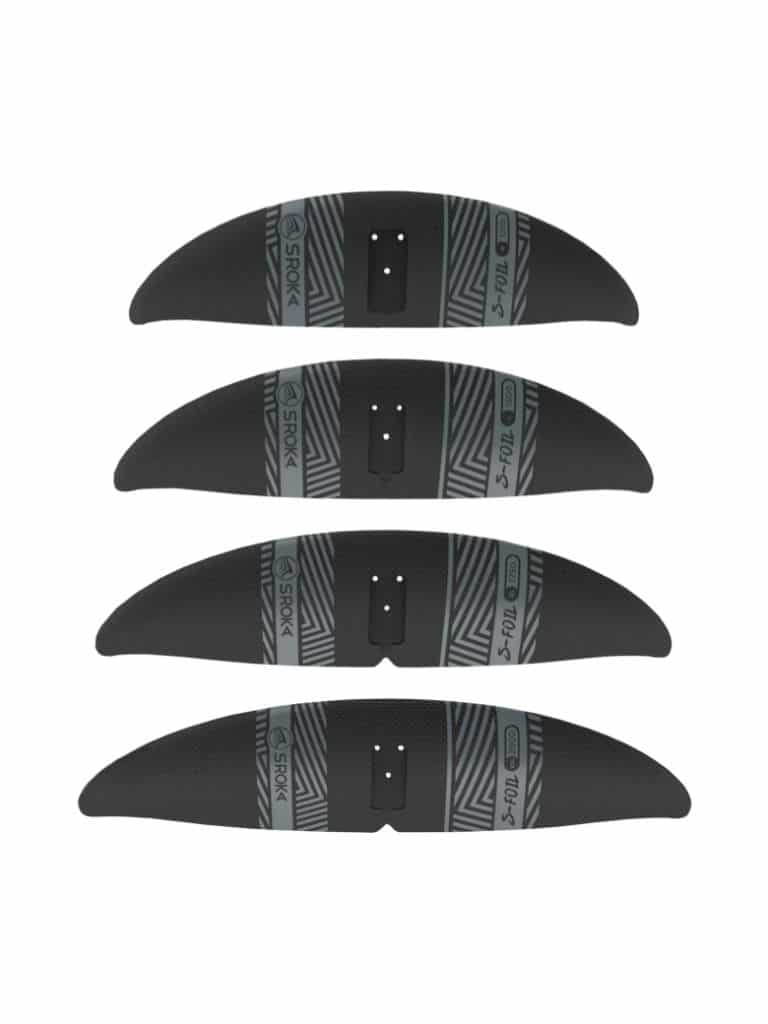
WHAT SIZE WING FOR WING FOIL?
The four front wing sizes of the SROKA S-Foil have been designed interchangeably for a plurality of uses allowing Wing Foil sailing and other disciplines, always according to the level of each practitioner and the conditions:
- S-Foil XXL 2000 : Beginner (85Kg+) in all conditions, intermediate in light wind (12knots and less)
- S-Foil XL 1750 : Beginner (70Kg+) in all conditions, intermediate in light winds (12kts and less)
- S-Foil L 1500 : Beginner (50Kg+) in all conditions, intermediate in light wind (12knots and less)
- S-Foil M 1250 : intermediate to expert level, 15knots of wind and more, ideal for surf foil
- S-Foil High Aspect 1190 Speed : intermediate to expert level in 15 knots and more – wing, kite and wind, all sizes
- S-Foil High Aspect 1190 Lift : intermediate to expert level from 10/12 knots – wing, surf and wake, all sizes
WHAT SIZE BOARD TO PRACTICE WING FOILING?
It is important to have a board that is stable enough for your size and level to start Wing Foil in the best conditions. Beware of miniaturization: it is very hard and very frustrating to start with small equipment, if not impossible, even with a good level of board sports. Board sizes like the 5’8 and 6’3 will be ideal for beginners, although a 50 or 60kg person looking for an evolutionary board may consider a 5’5… but not underneath.
Our Sky Rider range is available in 7 sizes, 5’4, 5’5, 5’7, 5’8, 6’0, and two 6’3 (made in France for the 5’5, 5’8 and 6’3). Inflatable models also have their advantages (available in 5’3, 6′ and 6’4 for the V2 version and V1 version on sale here, while stocks last): resistant to impacts, gentle on the knees, stable and easy to carry, while maintaining great gliding sensations thanks to a carbon plate. Find our full article on inflatable boards here.

How fast in wingfoil?
In general, the average wingfoil sailing speed is around 20 knots. It is a comfortable and pleasant speed to enjoy the sensations of gliding and freedom on the water. However, with good progress and experience, it is quite possible to reach higher speeds, around 25 knots or even more. This increased speed is usually achieved by the most advanced riders, who have mastered their technique perfectly and exploit the full potential of their equipment. But it is still important to note that it is not the speed that gives the level of the rider, in fact, it depends on several variables such as the weather conditions, the type of body of water and the equipment
Kitesurfing or wing foiling?
The choice between kitesurfing and wingfoil depends on personal preference and the sensations you are looking for. Kitesurfing offers thrills thanks to the power of the kite, but ideal conditions are rarer. In addition, kitesurfing requires more complex equipment assembly and requires more space to get the kite off the ground. On the other hand, wingfoil offers unique sensations by flying above the water rather than gliding on its surface. Wingfoil is also more convenient, as it can be practiced more frequently in varied conditions and spots. Although it may be slower than kitesurfing, wingfoil offers an immersive sailing experience and unique sensations. The choice between kitesurfing and wingfoil will therefore depend on individual preferences and the desire to experience occasional intense sensations or a more regular and versatile practice.
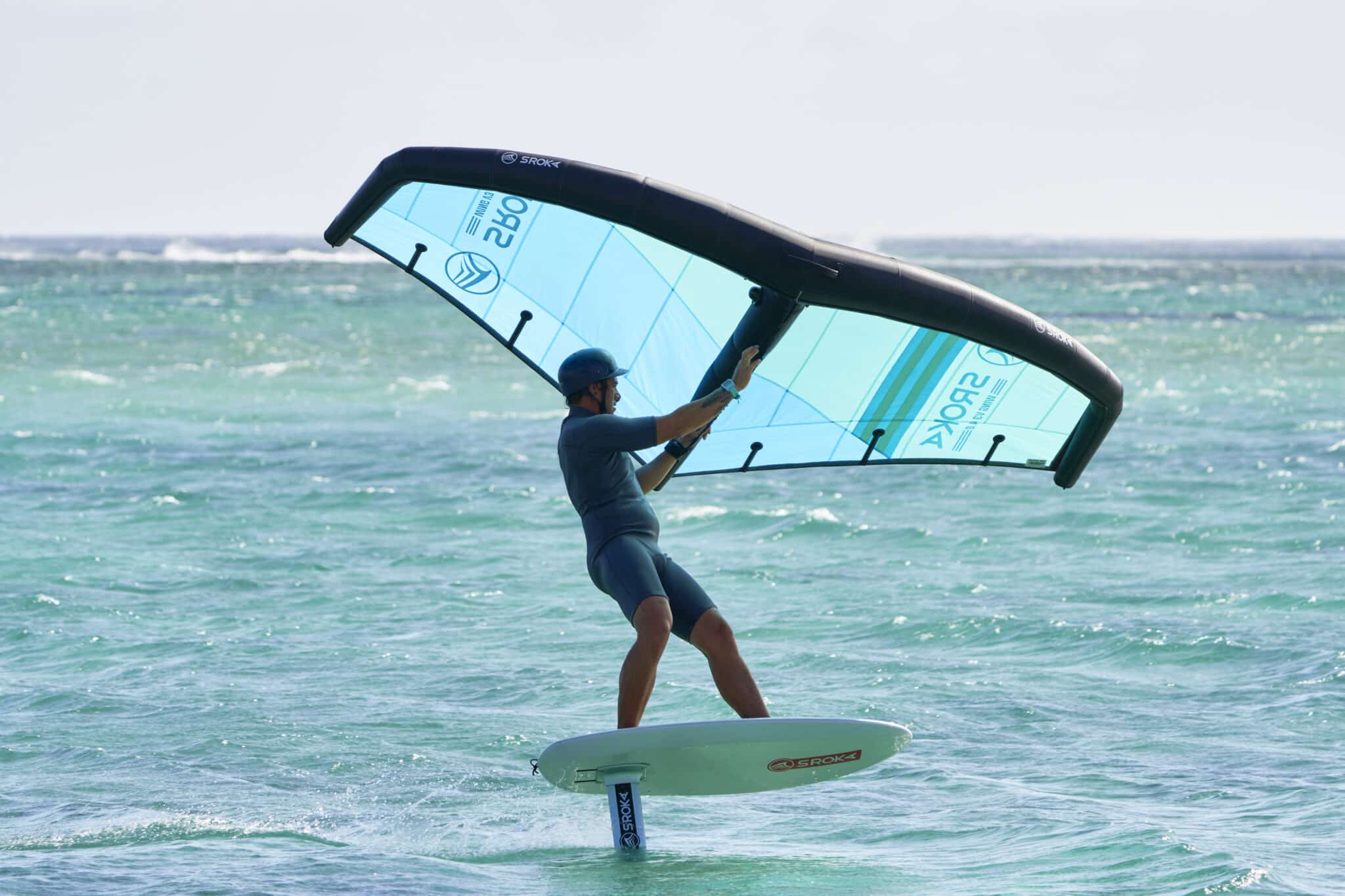
BRUNO SROKA'S OPINION ON WING FOILING
Wing Foil is a free-ride sport where you maximize the pleasure by minimizing the equipment. Easy to prepare, it’s pure pleasure. We are not looking for the speed or height of the jumps, but the sensation of soaring on the water and the wind swell, alone or with friends without any headaches. It is a 100% fun sport that is made for those who want to have a smile on their face all the time on the water.
My advice:
- Start on a flat body of water, sheltered from the swell, and never with an onshore wind
- Pay attention to other practitioners. Over time, you will go upwind and downwind more and downwind, sometimes you have a loss of visibility so check downwind that there is no one there when you start surfing the waves
- Starting with a large front wing is more stable, a little slower and allows you to fly in lighter wind conditions quickly and without hurting yourself
- Choose your equipment correctly. It is better to invest in a 4m kite and a foil with two choices of front wing to optimize the wind range and save a lot of money
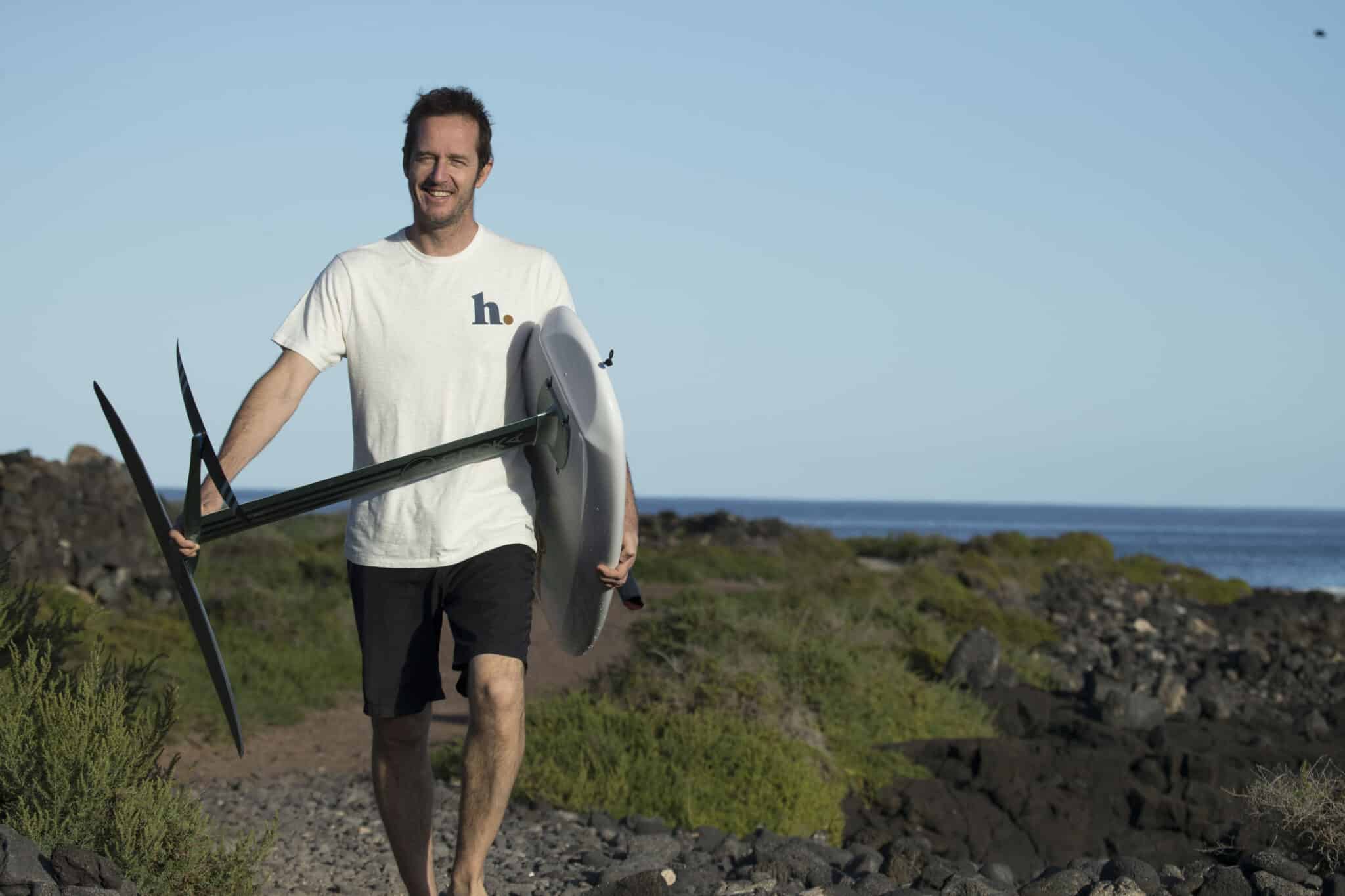
FIND ALL OUR TIPS FOR:
If you still have questions about this, or for any other request, please do not hesitate to contact us !
Article you may be interested in
The 360 wing foil is a maneuver that allows you to start freestyle flat on the water. This trick, which involves making a complete turn …
Mauritius, known for its white sandy beaches and crystal clear waters, is a dream destination for water sports enthusiasts. Among the popular activities that attract …
Wingfoiling is an emerging water sport that is gaining popularity due to its high accessibility. Whether you are young or old, wingfoiling is an activity …


